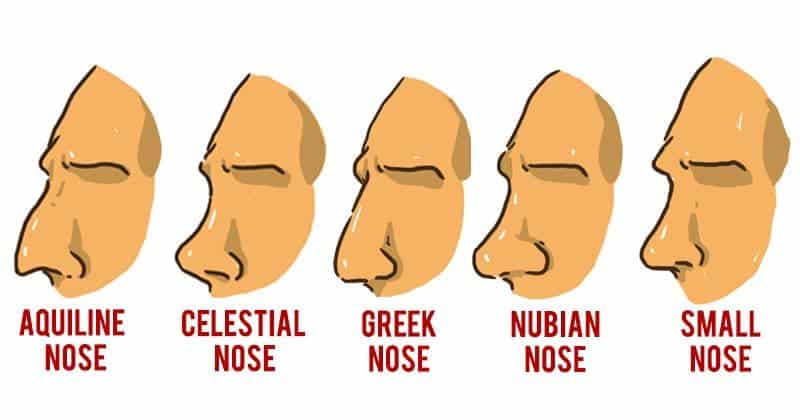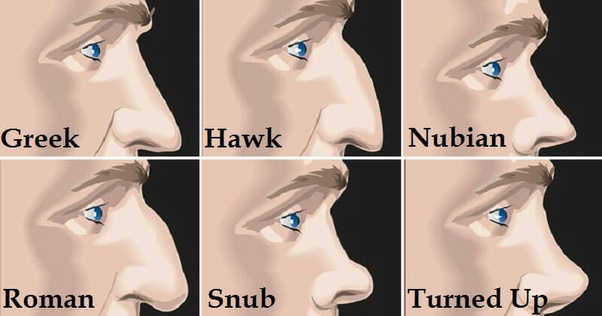Aquiline Features – Let’s Discover!
6 min read
My aquiline features, with a nose like an eagle’s, make me stand out. I’ve learned to love my unique look, feeling strong and confident.
Inspired by the majestic eagle, Aquiline features refer to a nose with a distinct curved shape. Commonly described as slightly hooked, this term originates from the Latin word ‘aquila,’ meaning ‘eagle,’ embodying strength and nobility.
In this article, we explore the defining characteristics, cultural significance, and modern perspectives surrounding aquiline features, delving into their historical roots and impact on personal identity and societal perceptions of beauty.
Understanding Aquiline Features – Here To Know!
Aquiline features refer to a specific type of nose shape, often called the “Roman nose.” This type of nose is characterized by a prominent and curved bridge, resembling the beak of an eagle.

People with aquiline noses may have a strong and distinguished appearance. Historically, this nose shape has been associated with strength, leadership, and nobility.
Aquiline noses stand out for their unique curvature, which sets them apart from other nose shapes like the straight or snub nose.
While some may see aquiline features as a mark of distinction and elegance, others might prefer different nose shapes based on personal preferences or cultural influences.
The term “aquiline” comes from the Latin word “aquilinus,” meaning “eagle-like,” highlighting the resemblance to the curved beak of an eagle.
This nose shape has been admired in various cultures and is often represented in art and literature, symbolizing authority and power.
1. How Can You Identify An Aquiline Nose:
An aquiline nose is easily recognizable by its prominent and curved bridge, giving it a slightly hooked appearance resembling an eagle’s beak.
This nose shape often features a distinct slope from the forehead to the tip, creating a noble and regal profile.
Compared to other nose shapes, the aquiline nose stands out for its solid and commanding presence, adding character to one’s facial features.
What Makes A Nose Aquiline – You Should Know!
An aquiline nose is characterized by several distinctive features that set it apart from other nose shapes. The most prominent trait of an aquiline nose is its pronounced and curved bridge, which gives it a slightly hooked or beak-like appearance.
This curvature often extends from the forehead to the tip of the nose, creating a regal and distinguished profile.
This type of nose has a more prominent and defined structure than straight or snub noses, adding character and depth to one’s facial features.
While some may admire an aquiline nose’s elegance and commanding presence, others may opt for cosmetic procedures to alter its appearance based on personal preferences or cultural influences.

1. Characteristics Of An Aquiline Nose:
An aquiline nose is recognized by its prominent curved bridge, resembling an eagle’s beak. This nose shape typically has a slightly hooked appearance, adding a regal and distinguished quality to the face.
The nose curve extends from the forehead to the tip, creating a strong and commanding profile. Often associated with traits like strength and leadership, the aquiline nose has been admired in various cultures throughout history.
Its unique shape sets it apart from other nose types, contributing to the individuality of one’s facial features.
2. How the Bridge and Tip Shape Define Aquiline Noses:
The defining features of an aquiline nose are its prominent bridge and distinctive tip shape. The bridge of an aquiline nose is pronounced and curved, resembling an eagle’s beak. This curvature extends from the forehead to the tip, creating a slightly hooked appearance.
The tip of an aquiline nose may be refined or slightly downturned, adding to its regal and distinguished profile. These characteristics contribute to the unique and memorable appearance of aquiline noses.
Recognizing Aquiline Noses – Take A Look Over Them!
Aquiline noses are easily identifiable by their distinct features. They typically have a pronounced and curved bridge, resembling an eagle’s beak.
This curvature extends from the forehead to the tip, creating a slightly hooked appearance. The bridge of the nose often stands out prominently on the face, adding a regal and distinguished quality.
Additionally, aquiline noses may have a refined or slightly downturned tip, enhancing their unique profile. These noses are often associated with strength, leadership, and nobility. They have been revered in various cultures for their commanding presence throughout history.
Compared to other nose shapes, aquiline noses have a strong and prominent structure, contributing to the individuality of one’s facial features.
Their distinctive appearance makes them memorable and adds character to the face. They are characterized by a prominent curved bridge reminiscent of an eagle’s beak.
This distinctive shape often extends from the forehead to the tip of the nose, creating a slightly hooked appearance.
Common traits seen in aquiline nose shapes include a regal and distinguished profile associated with strength and leadership. These noses stand out prominently on the face, adding character and depth to one’s facial features.
Comparing Aquiline Noses With Other Nose Shapes – Discover Differences!

These noses, characterized by a pronounced and curved bridge, differ from other nose shapes. Unlike straight or snub noses, aquiline noses have a distinctive curvature resembling an eagle’s beak. This sets them apart, evoking traits like strength and nobility.
In contrast, hooked noses may share some similarities with aquiline noses but often feature a sharper, more exaggerated curve. Meanwhile, Greek noses are known for their straight profiles and narrow bridges, reflecting classical beauty ideals.
Understanding these distinctions can help individuals appreciate the unique features of aquiline noses and how they contribute to facial diversity and character.
Cultural Significance Of Aquiline Noses – Learn History!
Aquiline noses have held cultural importance across various societies throughout history. Revered for their regal appearance, they symbolize strength, leadership, and nobility.
In ancient civilizations like Rome and the Middle East, aquiline noses were associated with influential figures and gods depicted in art and literature.
Literary and artistic representations often attribute aquiline noses to characters of authority or distinction. While perceptions may vary in modern times, these noses symbolize heritage and character.
Different cultures hold diverse views on aquiline noses, reflecting historical contexts and societal values.Despite occasional stereotypes or profiling based on physical features, aquiline noses continue to evoke admiration and intrigue.
Their historical admiration and portrayal in art highlight the enduring cultural significance of these distinctive facial features.
Modern Perspectives On Aquiline Features – One Must Know!
In today’s society, opinions on aquiline features vary. While some still admire their distinctive appearance, others opt for cosmetic procedures for a softer look.
Changing beauty standards influence how aquiline noses are perceived, leading some to consider rhinoplasty for alterations.

Individual preferences play a significant role, with some embracing their aquiline features as a unique aspect of identity.
Yet, societal pressures and personal desires often prompt individuals to seek surgical interventions for facial harmony.
Despite these shifts, aquiline features remain recognized for their historical significance and individual character.
Frequently Asked Questions:
1. Can aquiline features affect breathing?
While aquiline noses are primarily defined by their shape, in some cases, the structure may contribute to breathing difficulties, mainly if there are issues with nasal passages.
2. Do aquiline features change with age?
Like other facial features, aquiline noses can undergo subtle changes over time due to skin elasticity and bone structure alterations.
3. Are aquiline features hereditary?
Evidence suggests that specific nose shapes, including aquiline features, can have a genetic component, often passed down through family lines.
4. Can makeup or contouring techniques alter the appearance of aquiline features?
Yes, makeup and contouring can be used to visually modify the appearance of aquiline features, providing temporary adjustments to the nose’s perceived shape and contour.
Conclusion:
In summary, aquiline features, which look like an eagle’s nose, are special because they make each person unique. People like them because they remind us of strength and confidence. Whether we love them for their history or change them to fit today’s ideas, aquiline noses show how diverse and interesting our faces can be.
Also Read:






